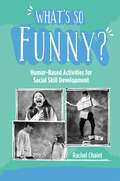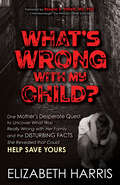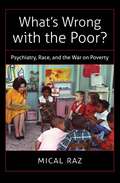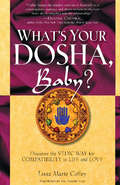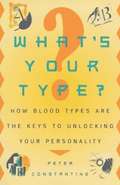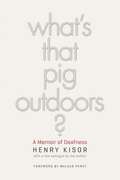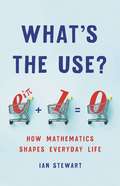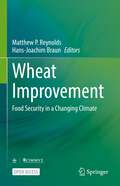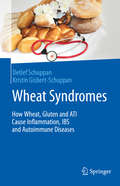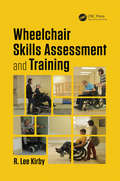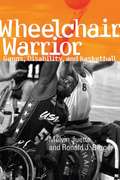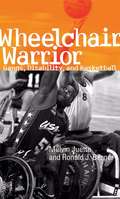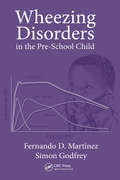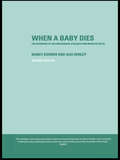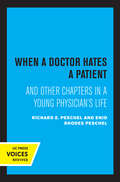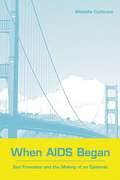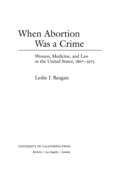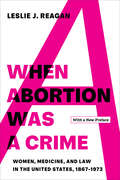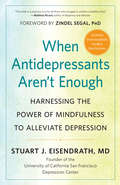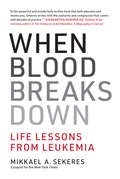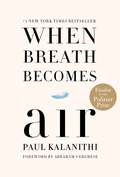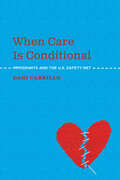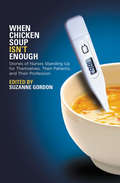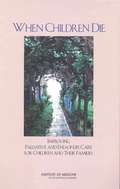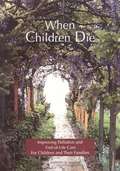- Table View
- List View
What's So Funny?: Humor-Based Activities for Social Skill Development
by Rachel ChaietWith ready-to-use lessons and strategies, What’s So Funny?: Humor-Based Activities for Social Skill Development provides readers with tools to help their clients improve their emotional intelligence through humor. Occupational therapists, speech-language pathologists, special educators, behavior therapists, and caregivers will benefit from the implementation of these strategies.What’s So Funny? contains a curriculum of more than 50 activities that emphasize two main ideas. The first is that humor (linguistic or physical) can be taught to many individuals with autism spectrum disorder or other disorders through explicit instruction, exposure to various types of humor, and embracing the individual’s preferred sense of humor. The second is that humorous activities can be used to increase social engagement, which can sometimes be a challenge for those with developmental disabilities.What’s So Funny? includes activities essential for individuals who: Appear to have a very limited concept or basic developmental level of humor Need to improve their understanding of socially appropriate humor Lack understanding of appropriate times to use humor Are nonverbal, have limited expressive communication skills, or use augmentative communication devices Have a difficult time initiating social interactions with their peers With a flexible program that can be used for either small groups or individuals from ages 7 years to adult, What’s So Funny?: Humor-Based Activities for Social Skill Development is a relevant and easy-to-use resource. Discussing a variety of types of humor on different developmental levels, from slapstick to word play, this program improves participants’ abilities to connect and engage with others through the powerful tool of humor.
What's Wrong with My Child?
by Elizabeth HarrisWhat’s Wrong with My Child? reveals a mother’s quest for answers about her son’s psych symptoms that leads to shocking discoveries that could impact struggling families in the United States and possibly globally. Elizabeth Harris’ son Cody was eleven when, out of the blue, he started exhibiting signs of Obsessive-Compulsive Disorder (OCD). The OCD turned into something far more sinister when Cody started having episodes where he seemed to lose total control over his actions, leading to Cody being committed to a county youth detention center. There, he was placed in solitary confinement for weeks. For five years, Elizabeth fought a hard battle to find out what was going on with her son and their family while simultaneously battling an unsympathetic judicial system. Driven to find a cure, Elizabeth visited countless doctors across the USA. She quickly became frustrated by the fact that there was no agreement in the medical community regarding PANDAS (Pediatric Autoimmune Neuropsychiatric Disorders Associated with Strep), the disease behind Cody’s transformation. In her quest for answers, this science-minded spa owner found proof of weaponized bacteria not only impacting their extended family, but that could be making families around the USA and possibly globally sick as well.
What's Wrong with the Poor?
by Mical RazIn the 1960s, policymakers and mental health experts joined forces to participate in President Lyndon Johnson's War on Poverty. In her insightful interdisciplinary history, physician and historian Mical Raz examines the interplay between psychiatric theory and social policy throughout that decade, ending with President Richard Nixon's 1971 veto of a bill that would have provided universal day care. She shows that this cooperation between mental health professionals and policymakers was based on an understanding of what poor men, women, and children lacked. This perception was rooted in psychiatric theories of deprivation focused on two overlapping sections of American society: the poor had less, and African Americans, disproportionately represented among America's poor, were seen as having practically nothing. Raz analyzes the political and cultural context that led child mental health experts, educators, and policymakers to embrace this deprivation-based theory and its translation into liberal social policy. Deprivation theory, she shows, continues to haunt social policy today, profoundly shaping how both health professionals and educators view children from low-income and culturally and linguistically diverse homes.
What's Your Dosha, Baby?: Discover the Vedic Way for Compatibility in Life and Love
by Lissa Marie CoffeyThousands of years ago, philosophers and scientists in ancient India devised a system called Ayurveda, or ?the science of life, OCO which explains the nature of everything in the universe. Now, in WhatOCOs Your Dosha, Baby?, author Lisa Marie Coffey applies this ancient wisdom to modern-day relationships, offering readers an exciting new way to measure their compatibility with lovers, friends, co-workers, and family, and arming them with the insight they need to make all their relationships work. After determining their personal dosha?one of three personality types based on physical features and personality traits?readers can learn how their dosha interacts with the others, their physical and emotional communication styles, instinctual preferences regarding food, travel, lifestyle, and work, and much more. Perfect for those looking to end the squabbling with their mate, resolve a conflict with their boss, or get the man or woman of their dreams to commit, WhatOCOs Your Dosha, Baby? will help readers find true happiness and achieve great success in life, love, and relationships. "
What's Your Type? How Blood Types are the Keys to Unlocking Your Personality
by Peter Constantine"Using research developed in the past three decades, personality psychologists have discovered an essential genetic connection between your blood type and your behavior, needs, and abilities. Now this groundbreaking book - the first of its kind - helps you understand and analyze the extraordinary influence your blood type has on your life." "In What's Your Type? discover the blood type that characterizes a person who is clear-thinking and calm, and able to take charge of a situation; the blood type that links society's most ambitious entrepreneurs, great engineers, and dedicated religious leaders; the blood group that carries traits of grace, sociability, and emotional depth; and the blood type shared by many creative artists and performers."--BOOK JACKET. Title Summary field provided by Blackwell North America, Inc. All Rights Reserved
What's that pig outdoors?
by Henry KisorHenry Kisor lost his hearing at age three to meningitis and encephalitis but went on to excel in the most verbal of professions as a literary journalist. This new and expanded edition of Kisor's engrossing memoir recounts his life as a deaf person in a hearing world and addresses heartening changes over the last two decades due to the Americans with Disabilities Act of 1990 and advancements in cochlear implants and modes of communication. _x000B_Kisor tells of his parents' drive to raise him as a member of the hearing and speaking world by teaching him effective lip-reading skills at a young age and encouraging him to communicate with his hearing peers. _x000B_Kisor updates the continuing disagreements between those who advocate sign language and those who practice speech and lip-reading, discusses the increased acceptance of deaf people's abilities and idiosyncrasies, and considers technological advancements that have enabled deaf people to communicate with the hearing world on its own terms.
What's the Use?: How Mathematics Shapes Everyday Life
by Ian StewartSee the world in a completely new way as an esteemed mathematician shows how math powers the world—from technology to health care and beyond. Almost all of us have sat in a math class, wondering when we'd ever need to know how to find the roots of a polynomial or graph imaginary numbers. And in one sense, we were right: if we needed to, we'd use a computer. But as Ian Stewart argues in What's the Use?, math isn't just about boring computations. Rather, it offers us new and profound insights into our world, allowing us to accomplish feats as significant as space exploration and organ donation. From the trigonometry that keeps a satellite in orbit to the prime numbers used by the world's most advanced security systems to the imaginary numbers that enable augmented reality, math isn't just relevant to our lives. It is the very fabric of our existence.
Wheat Improvement: Food Security in a Changing Climate
by Matthew P. Reynolds Hans-Joachim BraunThis open-access textbook provides a comprehensive, up-to-date guide for students and practitioners wishing to access in a single volume the key disciplines and principles of wheat breeding. Wheat is a cornerstone of food security: it is the most widely grown of any crop and provides 20% of all human calories and protein. The authorship of this book includes world class researchers and breeders whose expertise spans cutting-edge academic science all the way to impacts in farmers’ fields. The book’s themes and authors were selected to provide a didactic work that considers the background to wheat improvement, current mainstream breeding approaches, and translational research and avant garde technologies that enable new breakthroughs in science to impact productivity. While the volume provides an overview for professionals interested in wheat, many of the ideas and methods presented are equally relevant to small grain cereals and crop improvement in general. The book is affordable, and because it is open access, can be readily shared and translated -- in whole or in part -- to university classes, members of breeding teams (from directors to technicians), conference participants, extension agents and farmers. Given the challenges currently faced by academia, industry and national wheat programs to produce higher crop yields --- often with less inputs and under increasingly harsher climates -- this volume is a timely addition to their toolkit.
Wheat Syndromes: How Wheat, Gluten and ATI Cause Inflammation, IBS and Autoimmune Diseases
by Detlef Schuppan Kristin Gisbert-SchuppanThis book is about three inflammatory conditions that underlie wheat sensitivities caused by the consumption of wheat and related cereals. The book describes, discusses and differentiates celiac disease, amylase trypsin inhibitor (ATI) sensitivity, and the wide spectrum of wheat allergies, especially a novel, but highly common atypical wheat allergy.The mechanisms of the three wheat sensitivities along with their clinical characteristics, and their their state-of-the art diagnosis and therapy are thoroughly described. This is accompanied by commented case reports. The book is well structured and illustrated with numerous easy-to-grasp yet scientifically updated sketches. The novelty, immunological insight and praxis relevance for specialists as well as patients and interested laypeople makes this book appealing to a broad readership. Written by an internationally distinguished scientist and clinician in food and wheat related diseases, this book is intended for GPs, internists, gastroenterologists, rheumatologists and immunologists, as well as dieticians, researchers and especially patients who might be affected by these sensitivities.
Wheelchair Skills Assessment and Training (Rehabilitation Science in Practice Series)
by R. Lee KirbyThis book provides a wide spectrum of readers with comprehensive but easily understandable protocols for the assessment and training of wheelchair skills. The Wheelchair Research Team at Dalhousie University and the Capital District Health Authority in Halifax (lead by the author) have focused on wheelchair safety and performance for three decades, as exemplified through the Wheelchair Skills Program. This is considered the top such program in the world. This new book is largely based on this program which has been accessed and utilized by over 75,000 people in 177 countries since 2007.
Wheelchair Warrior: Gangs, Disability, and Basketball
by Juette Melvin Berger Ronald J.Melvin Juette has said that becoming paralyzed in a gang-related shooting was “both the worst and best thing that happened” to him. The incident, he believes, surely spared the then sixteen year-old African American from prison and/or an early death. It transformed him in other ways, too. He attended college and made wheelchair basketball his passion—ultimately becoming a star athlete and playing on the U. S. National Wheelchair Basketball Team. In Wheelchair Warrior, Juette reconstructs the defining moments of his life with the assistance of sociologist Ronald Berger. His poignant memoir is bracketed by Berger’s thoughtful introduction and conclusion, which places this narrative of race, class, masculinity and identity into proper sociological context, showing how larger social structural forces defined his experiences. While Juette’s story never gives into despair, it does challenge the idea of the “supercrip. ”
Wheelchair Warrior: Gangs, Disability, and Basketball
by Melvin Juette Ronald BergerThe true story of a Chicago gang member who was shot and paralyzed, and became a world-class wheelchair athlete.
Wheezing Disorders in the Pre-School Child: Pathogenesis and Management
by Fernando D. Martinez Simon GodfreyThe infant with persistent or recurrent wheeze during the first 2 years of life poses a particularly difficult diagnostic dilemma, which can be a source of considerable anxiety to both physicians and parents. Without neglecting basic science, Wheezing Disorders in the Preschool Child presents information in a logical and readable fashion that is pa
When A Baby Dies: The Experience of Late Miscarriage, Stillbirth and Neonatal Death
by Alix Henley Nancy KohnerEvery year in the UK over 10,000 babies die before birth or shortly afterwards. For the parents, the grief is hard to bear. In this book, parents who have lost a baby tell their stories. They speak about what happened, how they felt, how they have been helped by others and how they helped themselves.Using letters from and interviews with many bereaved parents, Nancy Kohner and Alix Henley have written a book which offers understanding of what it means to lose a baby and the grief that follows. When a Baby Dies also contains valuable information about why a baby dies, hospital practices, the process of grieving, sources of support, and the care parents need in future pregnancies.
When A Doctor Hates A Patient: And Other Chapters in a Young Physician's Life
by Enid Rhodes Peschel Richard E. PeschelThis title is part of UC Press's Voices Revived program, which commemorates University of California Press’s mission to seek out and cultivate the brightest minds and give them voice, reach, and impact. Drawing on a backlist dating to 1893, Voices Revived makes high-quality, peer-reviewed scholarship accessible once again using print-on-demand technology. This title was originally published in 1986.
When AIDS Began: San Francisco and the Making of an Epidemic
by Michelle CochraneBy examining the early outbreaks in San Francisco, Cochrane unfolds the "creation" of AIDS in one geographic location and then traces how and why major claims about the transmission of HIV were made, extrapolated and then disseminated to the rest of the world - all important factors in understanding this disease.
When Abortion Was a Crime
by Leslie J. ReaganAs we approach the 30th anniversary of Roe v. Wade, it's crucial to look back to the time when abortion was illegal. Leslie Reagan traces the practice and policing of abortion, which although illegal was nonetheless widely available, but always with threats for both doctor and patient. In a time when many young women don't even know that there was a period when abortion was a crime, this work offers chilling and vital lessons of importance to everyone. The linking of the words "abortion" and "crime" emphasizes the difficult and painful history that is the focus of Leslie J. Reagan's important book. Her study is the first to examine the entire period during which abortion was illegal in the United States, beginning in the mid-nineteenth century and ending with Roe v. Wade in 1973. Although illegal, millions of abortions were provided during these years to women of every class, race, and marital status. The experiences and perspectives of these women, as well as their physicians and midwives, are movingly portrayed here. Reagan traces the practice and policing of abortion. While abortions have been typically portrayed as grim "back alley" operations, she finds that abortion providers often practiced openly and safely. Moreover, numerous physicians performed abortions, despite prohibitions by the state and the American Medical Association. Women often found cooperative practioners, but prosecution, public humiliation, loss of privacy, and inferior medical care were a constant threat. Reagan's analysis of previously untapped sources, including inquest records and trial transcripts, shows the fragility of patient rights and raises provocative questions about the relationship between medicine and law. With the right to abortion again under attack in the United States, this book offers vital lessons for every American concerned with health care, civil liberties, and personal and sexual freedom.
When Abortion Was a Crime: Women, Medicine, and Law in the United States, 1867-1973, with a New Preface
by Leslie J. ReaganThe definitive history of abortion in the United States, with a new preface that equips readers for what’s to come. When Abortion Was a Crime is the must-read book on abortion history. Originally published ahead of the thirtieth anniversary of Roe v. Wade, this award-winning study was the first to examine the entire period during which abortion was illegal in the United States, beginning in the mid-nineteenth century and ending with that monumental case in 1973. When Abortion Was a Crime is filled with intimate stories and nuanced analysis, demonstrating how abortion was criminalized and policed—and how millions of women sought abortions regardless of the law. With this edition, Leslie J. Reagan provides a new preface that addresses the dangerous and ongoing threats to abortion access across the country, and the precarity of our current moment. While abortions have typically been portrayed as grim "back alley" operations, this deeply researched history confirms that many abortion providers—including physicians—practiced openly and safely, despite prohibitions by the state and the American Medical Association. Women could find cooperative and reliable practitioners; but prosecution, public humiliation, loss of privacy, and inferior medical care were a constant threat. Reagan's analysis of previously untapped sources, including inquest records and trial transcripts, shows the fragility of patient rights and raises provocative questions about the relationship between medicine and law. With the right to abortion increasingly under attack, this book remains the definitive history of abortion in the United States, offering vital lessons for every American concerned with health care, civil liberties, and personal and sexual freedom.
When Antidepressants Aren’t Enough: Harnessing the Power of Mindfulness to Alleviate Depression
by Stuart J. EisendrathFor nearly two decades, Dr. Stuart Eisendrath has been researching and teaching the therapeutic effects of mindfulness-based cognitive therapy (MBCT) with people experiencing clinical depression. By helping them recognize that they can find relief by changing how they relate to their thoughts, Eisendrath has seen dramatic improvements in people&’s quality of life, as well as actual, measurable brain changes. Easily practiced breath exercises, meditations, and innovative visualizations release readers from what can often feel like the tyranny of their thoughts. Freedom of thought, feeling, and action is the life-altering result.
When Blood Breaks Down: Life Lessons from Leukemia (The\mit Press Ser.)
by Mikkael A. SekeresA leading cancer specialist tells the compelling stories of three adult leukemia patients and their treatments, the disease itself, and the drugs developed to treat it.When you are told that you have leukemia, your world stops. Your brain can't function. You are asked to make decisions about treatment almost immediately, when you are not in your right mind. And yet you pull yourself together and start asking questions. Beside you is your doctor, whose job it is to solve the awful puzzle of bone marrow gone wrong. The two of you are in it together. In When Blood Breaks Down, Mikkael Sekeres, a leading cancer specialist, takes readers on the journey that patient and doctor travel together. Sekeres, who writes regularly for the Well section of the New York Times, tells the compelling stories of three people who receive diagnoses of adult leukemia within hours of each other: Joan, a 48-year-old surgical nurse, a caregiver who becomes a patient; David, a 68-year-old former factory worker who bows to his family's wishes and pursues the most aggressive treatment; and Sarah, a 36-year-old pregnant woman who must decide whether to undergo chemotherapy and put her fetus at risk. We join the intimacy of the conversations Sekeres has with his patients, and watch as he teaches trainees. Along the way, Sekeres also explores leukemia in its different forms and the development of drugs to treat it—describing, among many other fascinating details, the invention of the bone marrow transplant (first performed experimentally on beagles) and a treatment that targets the genetics of leukemia.The lessons to be learned from leukemia, Sekeres shows, are not merely medical; they teach us about courage and grace and defying the odds.
When Breath Becomes Air
by Abraham Verghese Paul KalanithiFor readers of Atul Gawande, Andrew Solomon, and Anne Lamott, a profoundly moving, exquisitely observed memoir by a young neurosurgeon faced with a terminal cancer diagnosis who attempts to answer the question What makes a life worth living? <p><p> At the age of thirty-six, on the verge of completing a decade's worth of training as a neurosurgeon, Paul Kalanithi was diagnosed with stage IV lung cancer. One day he was a doctor treating the dying, and the next he was a patient struggling to live. And just like that, the future he and his wife had imagined evaporated. When Breath Becomes Air chronicles Kalanithi's transformation from a naïve medical student "possessed," as he wrote, "by the question of what, given that all organisms die, makes a virtuous and meaningful life" into a neurosurgeon at Stanford working in the brain, the most critical place for human identity, and finally into a patient and new father confronting his own mortality. What makes life worth living in the face of death? What do you do when the future, no longer a ladder toward your goals in life, flattens out into a perpetual present? What does it mean to have a child, to nurture a new life as another fades away? These are some of the questions Kalanithi wrestles with in this profoundly moving, exquisitely observed memoir. <p> Paul Kalanithi died in March 2015, while working on this book, yet his words live on as a guide and a gift to us all. "I began to realize that coming face to face with my own mortality, in a sense, had changed nothing and everything," he wrote. "Seven words from Samuel Beckett began to repeat in my head: 'I can't go on. I'll go on.'" When Breath Becomes Air is an unforgettable, life-affirming reflection on the challenge of facing death and on the relationship between doctor and patient, from a brilliant writer who became both.
When Care is Conditional: Immigrants and the U.S. Safety Net
by Dani CarrilloFrom its inception, the public safety net in the United States has excluded many people because of their race, gendered roles, or other factors. As a result, they must prove their moral worthiness to get resources for themselves and their families. In When Care Is Conditional, sociologist Dani Carrillo reveals the ramifications of this conditional safety net by focusing on one particularly vulnerable population: undocumented immigrants. Through in-depth interviews with Latinx immigrants in northern California, Carrillo examines three circumstances—place, gender, and immigration status—that intersect to influence an individual’s access to health care, food assistance, and other benefits. She demonstrates that place of residence affects undocumented immigrants’ ability to get care since more services are available in urban areas, where many immigrants cannot afford to live, than suburban areas, where public transportation is limited. She also shows that while both men and women who are undocumented have difficulty obtaining care, men often confront more challenges. Undocumented women who are pregnant or mothers are eligible for some government safety net programs and rely on informal coethnic networks or a “guiding figure”—a relative, friend, neighbor, or coworker—who explains how to get care and makes them feel confident in accessing it. Most undocumented men, in contrast, are not eligible for public programs except in a medical emergency and often lack someone to guide them directly to care. Men sometimes steer one another to jobs through worker centers—where they may learn about various services and take advantage of those that increase their employability, like English or computer classes—but a culture of masculinity leads them to downplay medical problems and seek health care only in a crisis. As undocumented immigrants navigate this exclusionary system, Carrillo finds that they resist the rhetoric stigmatizing them as lawbreakers. Dismissing the importance of “papers” and highlighting their work ethic, they question the fairness of U.S. immigration policies and challenge ideas about who deserves care. Carrillo offers concrete recommendations, such as improving labor conditions and reexamining benefit eligibility, to increase access to care for not only undocumented immigrants but also people who have been excluded because of their race, criminal record, gender identity, sexual orientation, or disability. She argues that working with and across populations creates a powerful form of solidarity in advocating for inclusive care. When Care Is Conditional provides compelling insights into how safety net and immigration policies intersect to affect people’s everyday lives and calls for a cultural shift so that the United States can provide unconditional care for all.
When Chicken Soup Isn't Enough: Stories of Nurses Standing Up for Themselves, Their Patients, and Their Profession (The Culture and Politics of Health Care Work)
by Suzanne GordonThe reassuring bromides of "chicken soup for the soul" provide little solace for nurses—and the people they serve—in real-life hospitals, nursing homes, schools of nursing, and other settings. In the minefield of modern health care, there are myriad obstacles to quality patient care—including work overload, inadequate funds for nursing education and research, and poor communication between and within the professions, to name only a few. The seventy RNs whose stories are collected here by the award-winning journalist Suzanne Gordon know that effective advocacy isn't easy. It takes nurses willing to stand up for themselves, their coworkers, their patients, and the public.When Chicken Soup Isn't Enough brings together compelling personal narratives from a wide range of nurses from across the globe. The assembled profiles in professional courage provide new insight into the daily challenges that RNs face in North America and abroad—and how they overcome them with skill, ingenuity, persistence, and individual and collective advocacy at work and in the community. In this collection, we meet RNs working at the bedside, providing home care, managing hospital departments, teaching and doing research, lobbying for quality patient care, and campaigning for health care reform. Their stories are funny, sad, deeply moving, inspiring, and always revealing of the different ways that nurses make their voices heard in the service of their profession. The risks and rewards, joys and sorrows, of nursing have rarely been captured in such vivid first-person accounts. Gordon and the authors of the essays contained in this book have much to say about the strengths and shortcomings of health care today—and the role that nurses play as irreplaceable agents of change.
When Children Die: Improving Palliative And End-of-life Care For Children And Their Families
by Richard E. Behrman Marilyn J. FieldThe death of a child is a special sorrow. No matter the circumstances, a child's death is a life-altering experience. Except for the child who dies suddenly and without forewarning, physicians, nurses, and other medical personnel usually play a central role in the lives of children who die and their families. At best, these professionals will exemplify 'medicine with a heart.' At worst, families' encounters with the health care system will leave them with enduring painful memories, anger, and regrets.When Children Die examines what we know about the needs of these children and their families, the extent to which such needs are, and are not, being met, and what can be done to provide more competent, compassionate, and consistent care. The book offers recommendations for involving child patients in treatment decisions, communicating with parents, strengthening the organization and delivery of services, developing support programs for bereaved families, improving public and private insurance, training health professionals, and more. It argues that taking these steps will improve the care of children who survive as well as those who do not, and will likewise help all families who suffer with their seriously ill or injured child.Featuring illustrative case histories, the book discusses patterns of childhood death and explores the basic elements of physical, emotional, spiritual, and practical care for children and families experiencing a child's life-threatening illness or injury.
When Children Die: Improving Palliative and End-of-Life Care For Children and Their Families
by Richard E. Behrman Marilyn J. Field Committee on Palliative and End of Life Care for Children and Their FamiliesThe National Academies Press (NAP)--publisher for the National Academies--publishes more than 200 books a year offering the most authoritative views, definitive information, and groundbreaking recommendations on a wide range of topics in science, engineering, and health. Our books are unique in that they are authored by the nation's leading experts in every scientific field.
